148 IAP
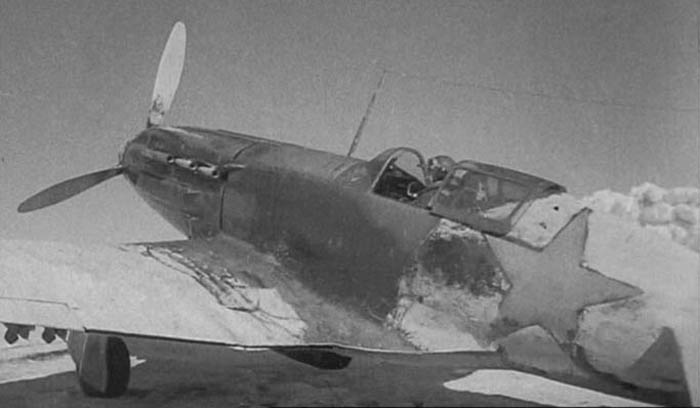
Left:
late MiG-3, attributed to 148 IAP in winter 1941-42, with a partial white finish on the underlying green-black temperate camo. This attribution creates some doubts because planes of 148 IAP photographed during the battle of Kharkov, some months later, appear completely different in painting.
This plane could be 'white 5'. From a wartime footage we can see many planes of the unit, but only numbers 5 and 40 are seen on the rudders, while we can suppose that all planes had their own number.
The white paint was the washable distemper MK-7, brushed on the rear of the fuselage, on the tail, on the outer part of the wings; this pattern was common to other types as LaGG-3s and Il-2s, and was probably due to the need to leave the engine cowling and the cockpit accessible when the white paint was drying.
Note the rockets under the wings, suggesting that the shot was taken
in winter 1941/42; the rocket rails of MiG-3s were removed in the spring
of 1941 due to their excessive drag.
The sliding hood frame looks cutten in its corner.
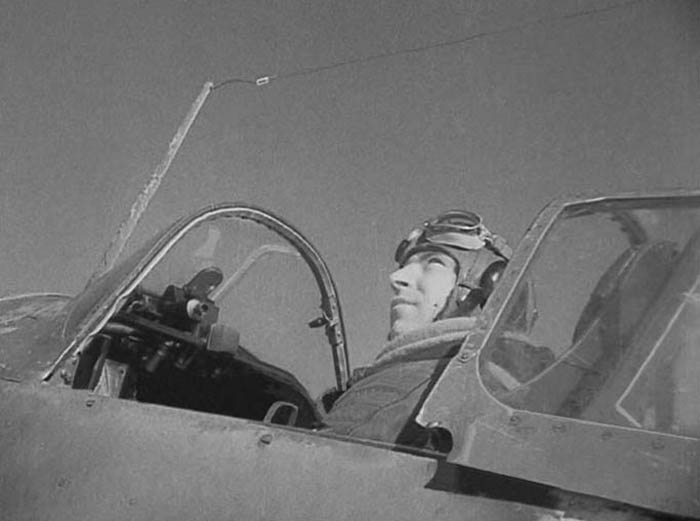
Left:
a detail of a MiG-3, possibly the same of the image above.
Note the cutten corner of the sliding hood; perhaps this was made to open
it more easily.
Note the dark finish, probably black, of many details inside the cockpit.
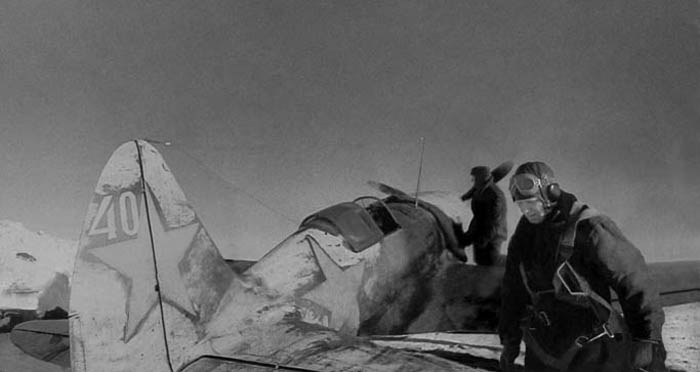
Left:
this interesting image show "white 40", presumably of 148 IAP, with its pilot and ground crew.
A cover (white on one side, dark on the other one) covered the nose and was being removed.
On this plane, the extension of white strokes is lesser than on the plane
of the first photo, probably including the wing tips.
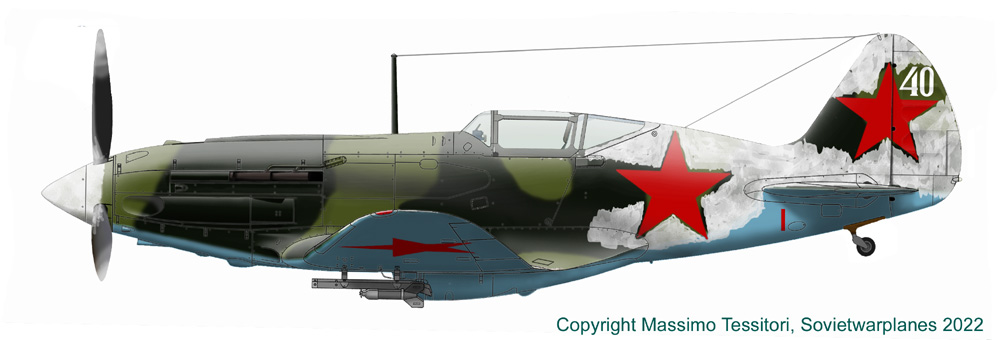
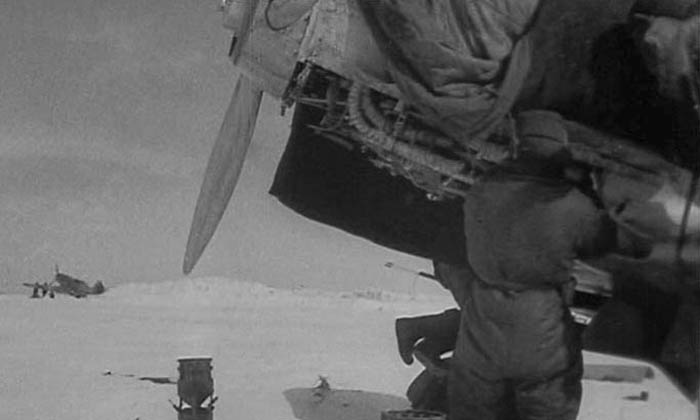
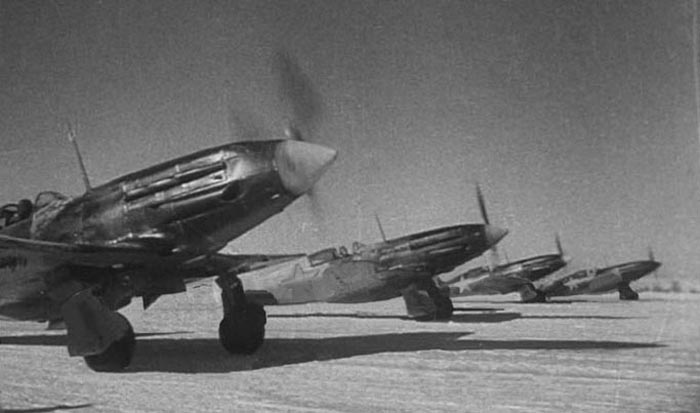
Many planes of this unit, presumably 148 IAP, were without any painted code. So far, planes with No.40 and 5 on the rudder have been identified in this unit.
The first plane of the photo seems without the rocket rails, while the other ones seem to have these weapons. Note that the extension of the white areas change from plane to plane; the third and fourth ones seem to have some white on their fin but not on the fuselage sides.
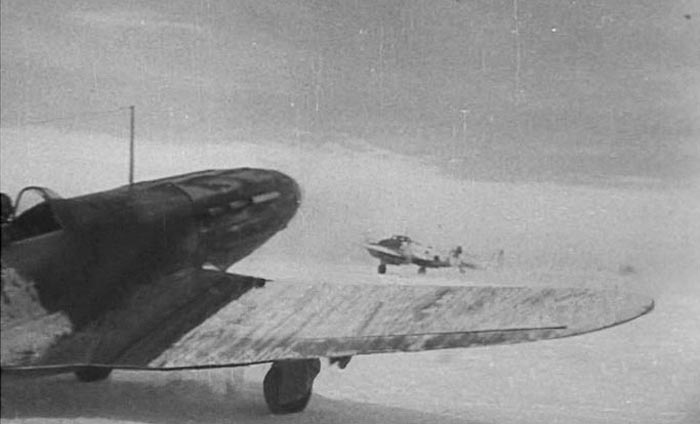
Left:
this plane had underwing rockets. Note the strange painting of its engine cowling, possibly an improvised black-green camouflage on a repainted panel.
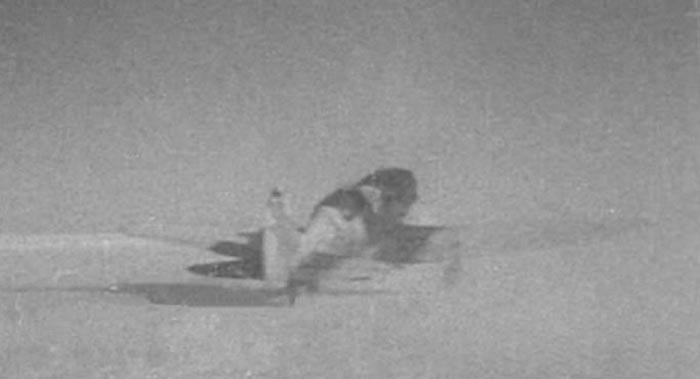
Left:
this plane features a white blotch on its nose too. An unreadable number can be vaguely seen on the top of its rudder
No rockets are visible; it could have been the same of the first plane of the line above.
439 IAP
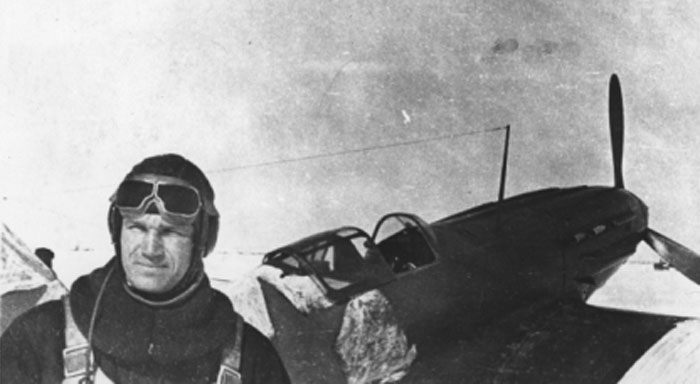
Left:
Pilot Kozlov Nikolai Aleksandrovich of 439 IAP PVO in winter 1942/43.
The plane looks very similar to those attributed to 148 IAP. An interesting difference is that the white finish ends sharply at the junction between the central body and the rear fuselage and wing consoles; so the plane could have been made with parts from different planes.
The plane seems to have a starter dog on the spinner.
60 of 154 IAP
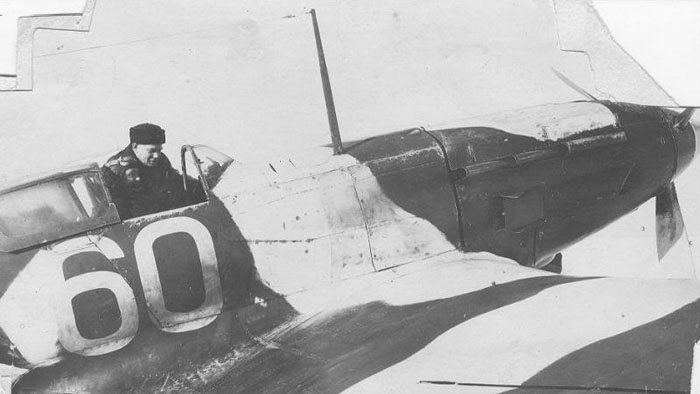
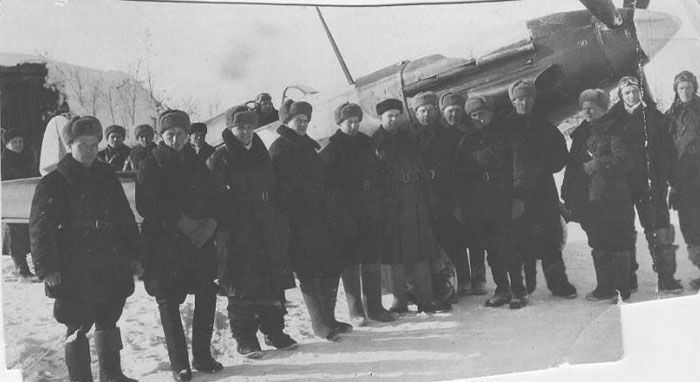
left: two photos of a most interesting late MiG-3 of 154 IAP on the Leningrad front..
Plane White 60 seems camouflaged with white disruptive bands accurately executed with spray brush and masks. The bands left visible both the green and the black bands of the temperate camouflage, but seems that they covered predominantly black areas. They were extended on part of the rear faces of the prop blades and on the front cone of the spinner.
Images from Scalemodels.ru
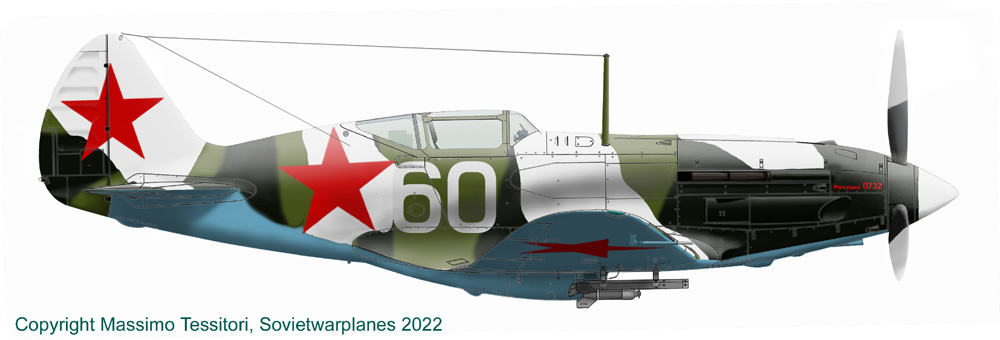
519 IAP
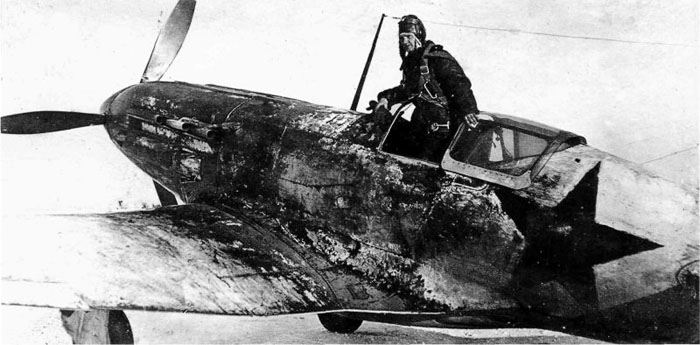
Left:
MiG-3 of 122 IAP (according to other sources, 519 IAP), early 1942.
The plane, whose number is unknown, appears with what could seem a partial winter camouflage, but could be only the result of wearing and stains on a plane that was originally intended with a solid white livery. The amount of wearing is so high, when compared to other planes that retained their white livery more intact, that one could wonder if there was an intentional remotion of white paint from areas.
It is likely that the plane was equipped with underwing rocket rails, as the most part of MiG-3s on this timeframe.
Image from Mikoyan's piston engined fighters of Gordon and Dexter